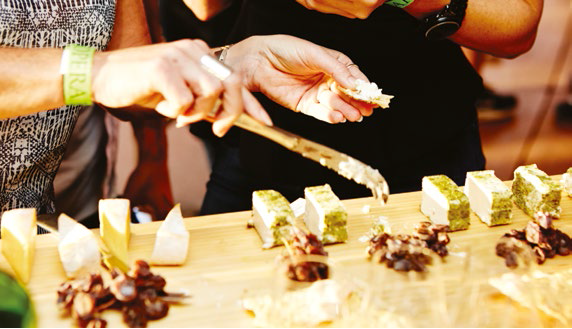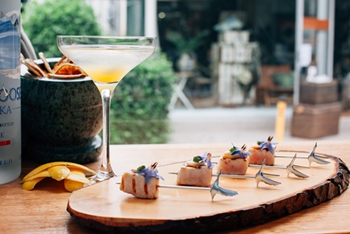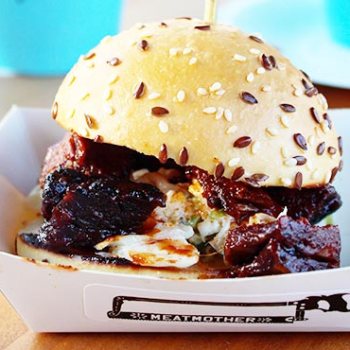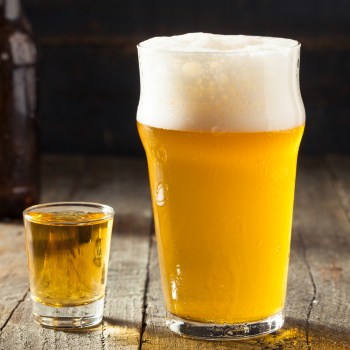There are so many articles and blogs and books dedicated to the intricacies of exactly what pairings work best and how to exploit the best in your menu that it is easy to be overwhelmed by the sheer scale of information. In reality, there are two key principles: complement and contrast.
The terms are fairly self-explanatory.
The former involves choosing a drink that is similar in some way to the dish or food stuff that you’re serving, while the latter involves combinations that are dissimilar. So far so good. However, we’re not just talking about flavours here. The characteristics that can be either complemented or contrasted are: flavour, intensity of flavour, texture, and weight (or body).
Some complementary examples are: an intensely flavoured cocktail with an intensely flavoured Thai dish, or a chocolate-forward stout with chocolate pudding, or a creamy chardonnay to match the creamy texture of lobster. On the flipside, a rich creamy cheese with a crisp IPA, or an earthy mushroom dish with a fruity wine, or a fruity dessert with an herbaceous pilsner.
The possibilities are endless.
WHISKY AND CHEESE MATCHING WITH STEVE DAVIS, OPERA BAR
The Opera Bar’s Meat + Cheese Room diversified this summer, moving into matching whisky with cheese, and the response has been incredibly positive, with Davis seeing plenty of customers returning to try new whiskies and new cheese matches. Believing that it is a privilege to have people trust him and the staff to create matches for them, Davis shared a few tips with us on how to
navigate the task in your own venue.
What are the basic principles of matching whisky with cheese?
You have to try everything, and work with what you have on the back bar and in the fridge (a tough job, I know). Just when you think you can predict the perfect pairing for a new product, some subtle flavour will reveal itself and you find yourself trying different combinations until one hits home. However, there are definitely a few rules that we’ve stumbled across along the way:
Complementary pairings:
• Softer whiskies (lowlands, Japanese) love softer, creamier cheeses – both texturally and in terms of flavour (brie, washed rind etc).
• Cheddar and sharper goats cheeses need a very defined dram to stand up to them.
• You can tie the whisky and cheese together with one common element, eg the fruitiness in Lagavulin 12yo ties in with the thicker fruit flavours of cloth-bound cheddar (even though usually Islay and cheddar butt heads).
Contrasting pairings:
• Bigger whiskies love savoury cheeses
• Softer goats cheeses can work very well with sweeter whiskies, like bourbons, some Australian styles, and even some Japanese.
Do you have a favourite match?
I’m a massive fan of peated whisky, and I love to get a big ball of buffalo mozzarella (or burrata) and make my way through a few different Islay styles. The savoury cheese acts as a bit of a blank canvas for this style of whisky, so you pick up on the subtle differences between the expressions. If I’m not in that smoky mood, I love an Aultmore 12yo with a lemon myrtle chevre.
How should bars work with their clients to educate them around whisky and cheese matching?
Staff are key – the people in there need to truly enjoy what they’re doing. If they have whisky as a staff drink, that’s a good sign. The right personality behind the bar will be able to make guests feel comfortable trying new things, not scared.
One final tip:
Drink as much whisky as you can, all the time.



